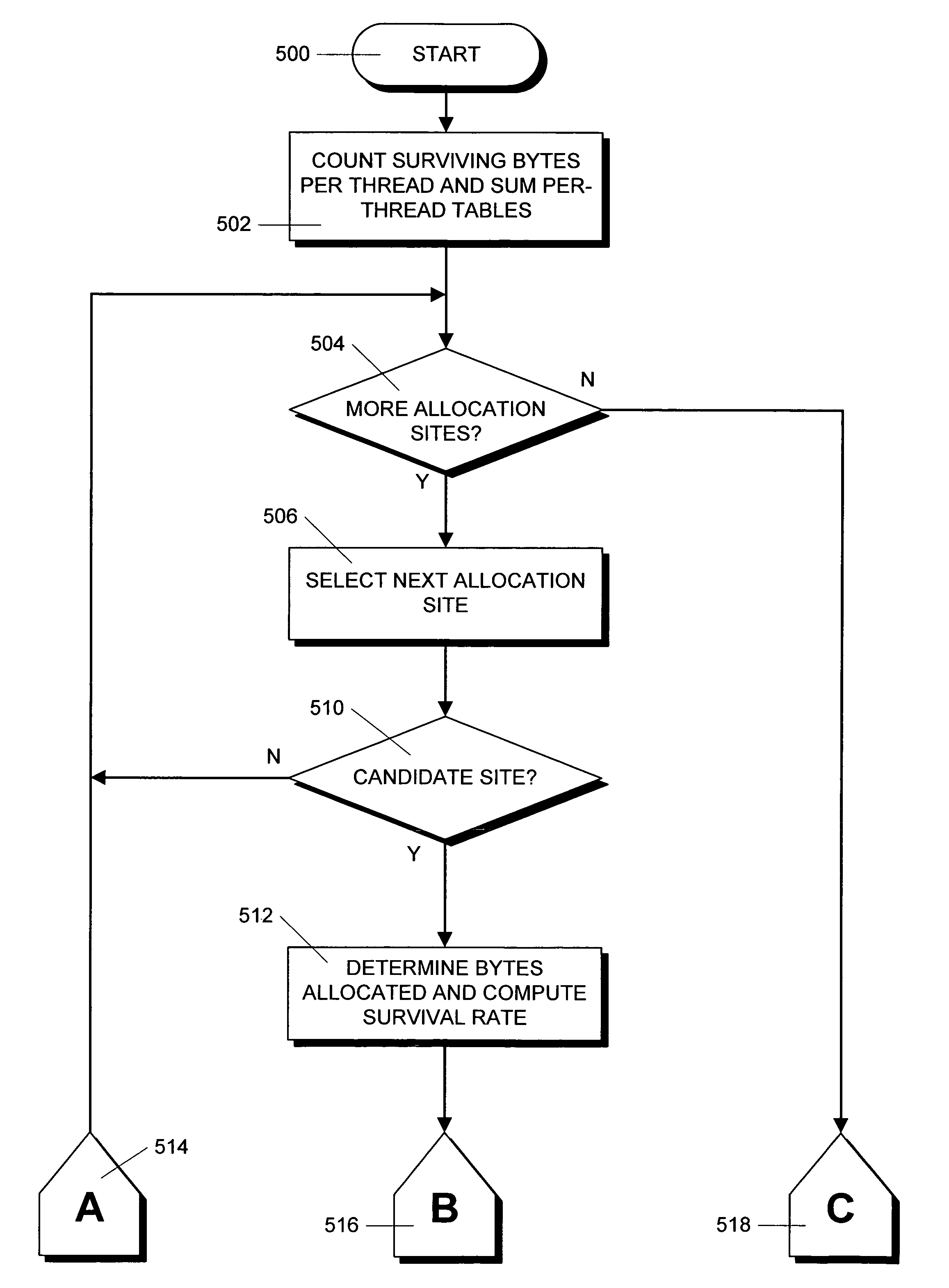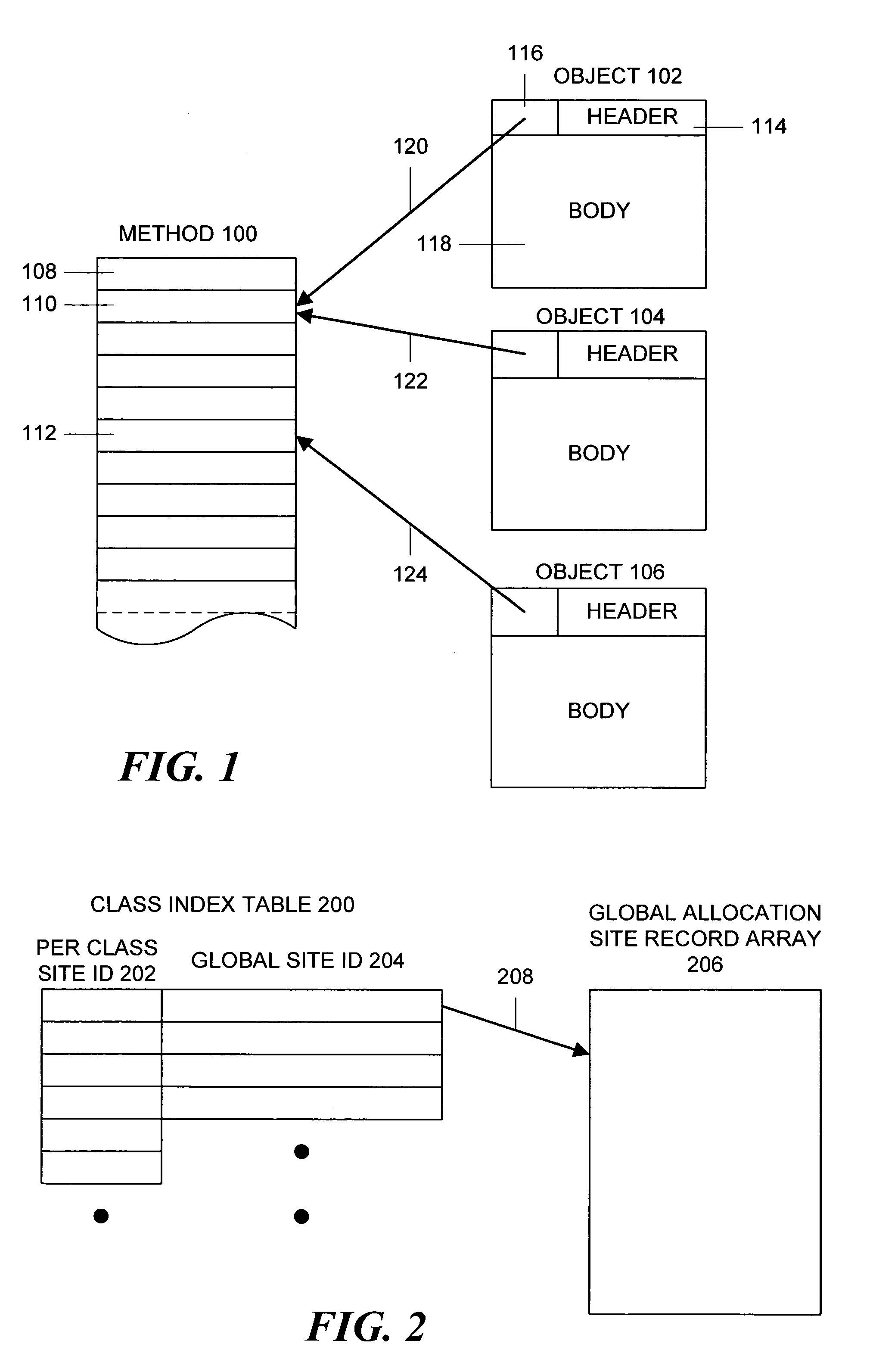Method and apparatus for byte allocation accounting in a system having a multi-threaded application and a generational garbage collector that dynamically pre-tenures objects
a technology of byte allocation and multi-threaded applications, applied in the field of automatic reclamation of allocated, but unused memory, or garbage, can solve the problems of long and unpredictable delays, generally not suitable for real-time or interactive systems, and inability to meet the needs of situations
- Summary
- Abstract
- Description
- Claims
- Application Information
AI Technical Summary
Benefits of technology
Problems solved by technology
Method used
Image
Examples
Embodiment Construction
[0027]In accordance with the principles of the invention, allocation code that is generated by a compiler is modified to implement a pre-tenuring process. In order to do this an assumption is made that each allocated object has a prefix called a “header” as well as a “body”. This arrangement is illustrated in FIG. 1 in which object 102 has a header area 114 and a body 118. Typically, one portion of header area 114 is used to indicate the class of the object 102; the remainder of header area 114 may be used to record information on other object attributes, such as locking, hash codes, and the like.
[0028]In order to implement the invention, some portion of header 114 must be dedicated to recording an identifier for each allocation site that allocated the object. Since the header 114 typically includes class information, these identifiers need only be unique per class. This arrangement is illustrated in FIG. 1 in which object 102 could be allocated from a site in method 100. Method 100...
PUM
 Login to View More
Login to View More Abstract
Description
Claims
Application Information
 Login to View More
Login to View More - R&D
- Intellectual Property
- Life Sciences
- Materials
- Tech Scout
- Unparalleled Data Quality
- Higher Quality Content
- 60% Fewer Hallucinations
Browse by: Latest US Patents, China's latest patents, Technical Efficacy Thesaurus, Application Domain, Technology Topic, Popular Technical Reports.
© 2025 PatSnap. All rights reserved.Legal|Privacy policy|Modern Slavery Act Transparency Statement|Sitemap|About US| Contact US: help@patsnap.com



